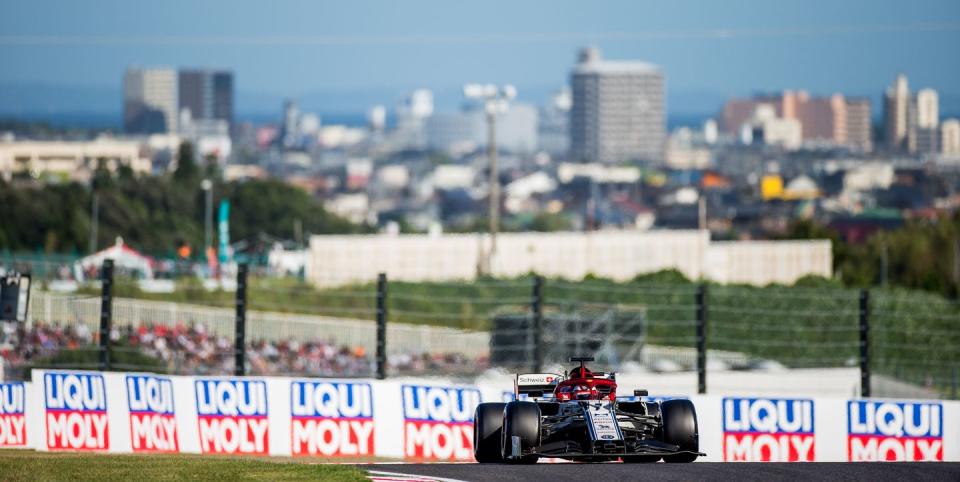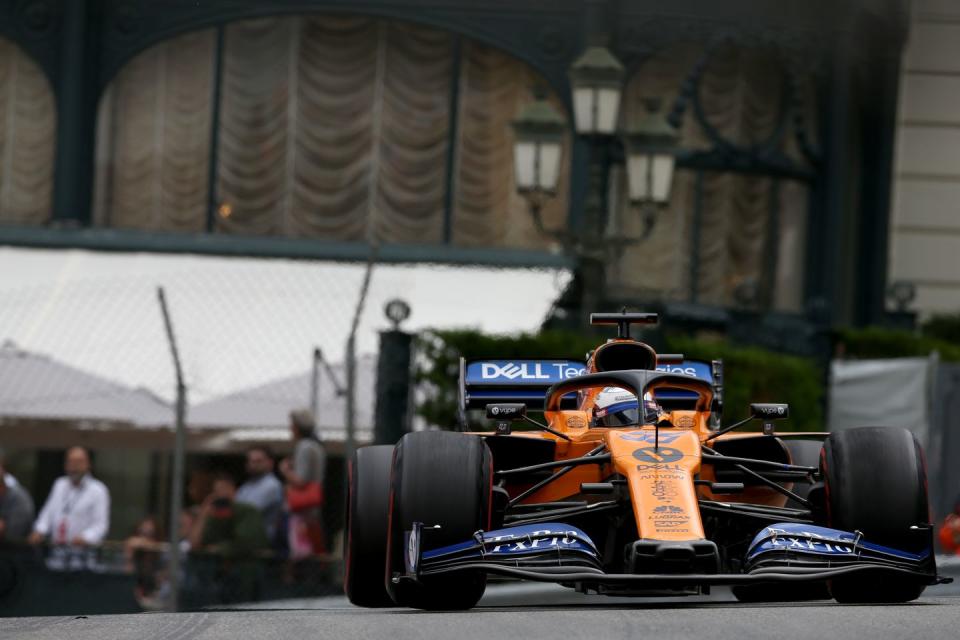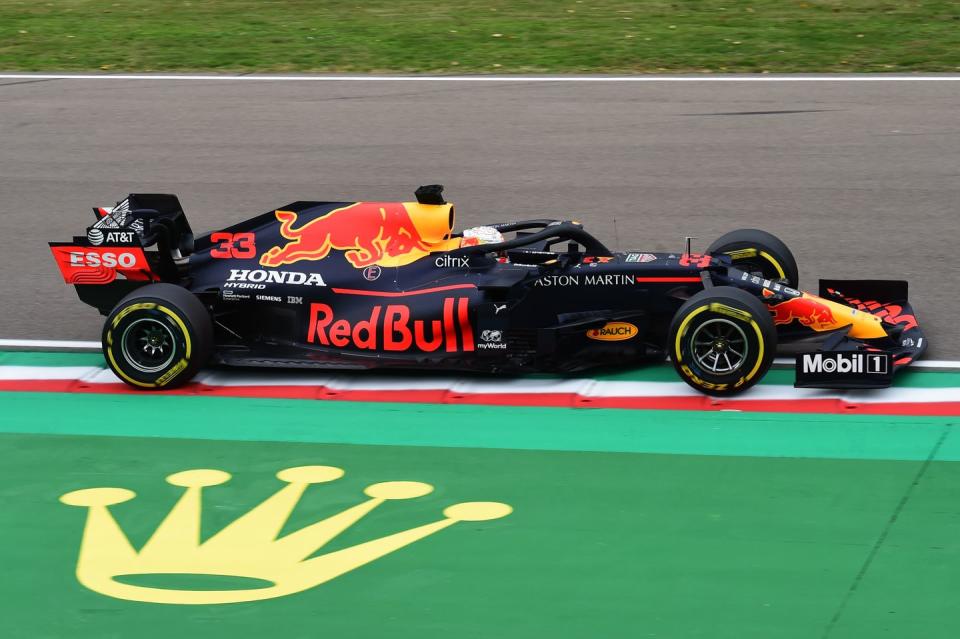With F1 Bahrain Grand Prix Fast Approaching, Series Can't Shake Shadow of COVID-19

International fans won't be allowed to attend this summer's Olympic Games in Japan. F1 officials have yet to make a similar announcement regarding this year's F1 Japanese Grand Prix.
It remains to be seen if Formula 1 can deliver on the planned calendar of 23 races, but this is the ambition.
At the moment, there are plans to race in both Monaco and Baku (on May 23 and June 6 respectively). Baku says it will go ahead without fans.
The big news in international sport in recent days has been the announcement from Japan that international spectators will not be allowed to attend the Olympic Games this summer.
An estimated 900,000 tickets have been sold to overseas residents for the Olympic and Paralympic events, and money for those tickets will all now be refunded, though spectators may lose money on flights and hotels. The Games are scheduled to take place between July 23 and August 8, with the Paralympics running from August 24 until September 5.
Meanwhile, the Japanese Grand Prix is scheduled for October 10. While the Grand Prix may go ahead as planned, it is unlikely that any foreign visitors will be allowed. Having said that, with Yuki Tsunoda becoming the first Japanese driver to race in F1 since Kamui Kobayashi left in 2014, local interest is going to be high, although the cautious Japanese authorities will almost certainly limit the number of spectators allowed to attend.
It remains to be seen if Formula 1 can deliver on the planned calendar of 23 races, but this is the ambition. The secondary aim is to have as many events as possible. If another outbreak of the latest COVID-19 variance gets really bad, the target will be to get to the minimum requirement of races in the various commercial contracts (generally 15 or 16 races). Each race lost represents less money for the teams in 2022.
There are signs of a third wave of infections that are building up around the world.
Governments are rushing to vaccinate their populations as quickly as possible but it is going to be a long process. In Europe, Formula 1’s heartland, less than 10 percent of the population have had even one injection. European Commission head Ursula von der Leyen said last week that “we see the crest of a third wave forming in member states, and we know that we need to accelerate the vaccination rates. We are in the crisis of the century.”
While the pandemic is easing off in some places, in others there are new lockdowns, making it very difficult for motorsport to get settled calendars. The riskiest events are the street races, which require huge up-front investment to build the circuits and the infrastructure required.
Formula 1 has not raced on the streets of a major city since the pandemic began a year ago, and such events make little sense as they are usually designed to attract tourists and are paid for from the revenues created by the influx of people to the area. This is true not only with street tracks but also with events such as the United States Grand Prix in Austin or the Canadian Grand Prix in Montreal. However, it is difficult to see how cost-strapped governments will accept to cover the costs of races when the tourist industry is moribund.

At the moment, there are plans to race in both Monaco and Baku (on May 23 and June 6 respectively). Baku says it will go ahead without fans.
“We are, of course, thrilled to welcome F1 back to Baku after such a difficult period but we will deeply miss our amazing fans that have played a vital part in making this race weekend such a special occasion year after year,” says Arif Rahimov, the director of the event. “Our main priority this year will continue to be the health and safety of everyone working and participating at the event, whilst still delivering an awesome spectacle to for the world to savour watching from home. We are once again expecting no shortage of drama, high-speeds and excitement when F1 arrives back in Baku for the fifth time.”
The promoter says that fans who bought tickets for the 2020 race can use those tickets in 2022 at no extra cost, as long they have not yet requested a refund.
Monaco is still pushing ahead even though in recent days the Principality, which is entirely surrounded by the French Alpes Maritimes département (similar to a U.S. county) is now locked down again. The worst case scenario is that Monaco will go ahead without fans and the costs of construction will have to be paid by the Automobile Club de Monaco, or the government which helps fund the event.
It is becoming increasingly clear that race promoters must either negotiate cheaper fee deals with Formula 1, or find the money required from other sources, as the current business models are usually based on full grandstands. There are always going to be countries that are willing to pay whatever it takes to get an F1 race, but in any democratic society there will inevitably be questions about whether motor racing is the right thing to use public money for when that money is needed for so many other things.

The Formula 1 group says that all the F1 race promoters have said that they think they can host races, despite the problems. This may be wishful-thinking in some cases. However, the race at Imola is going ahead despite large parts of Italy being under lockdown.
There is also a lot of creative thinking going on.
In France, the number of people allowed at public events in areas that are not locked down is limited to 5,000 people, and they must be seated. The French Grand Prix is promoted by a company called Grand Prix de France—Le Castellet, which is a firm owned by a partnership of public and private entities which will benefit from the event. Despite the 5,000-person limit, the organization has managed to convince the authorities that the Circuit Paul Ricard can be divided into three zones, each entirely separate from the others, and is allowed to have 5,000 spectators per day in each zone, as long as they seated in grandstands and use only one in every two seats.
This means that the race can have 15,000 spectators a day, and thus with a three-day event can get to a crowd figure of 45,000. It is not enough to break even but the promoter is currently looking to get to the required budget with help from its partners, its sponsors and advertisers.
Clearly, flipping the calendar to 2021 was not enough to put COVID-19 behind us.

 Yahoo Autos
Yahoo Autos 